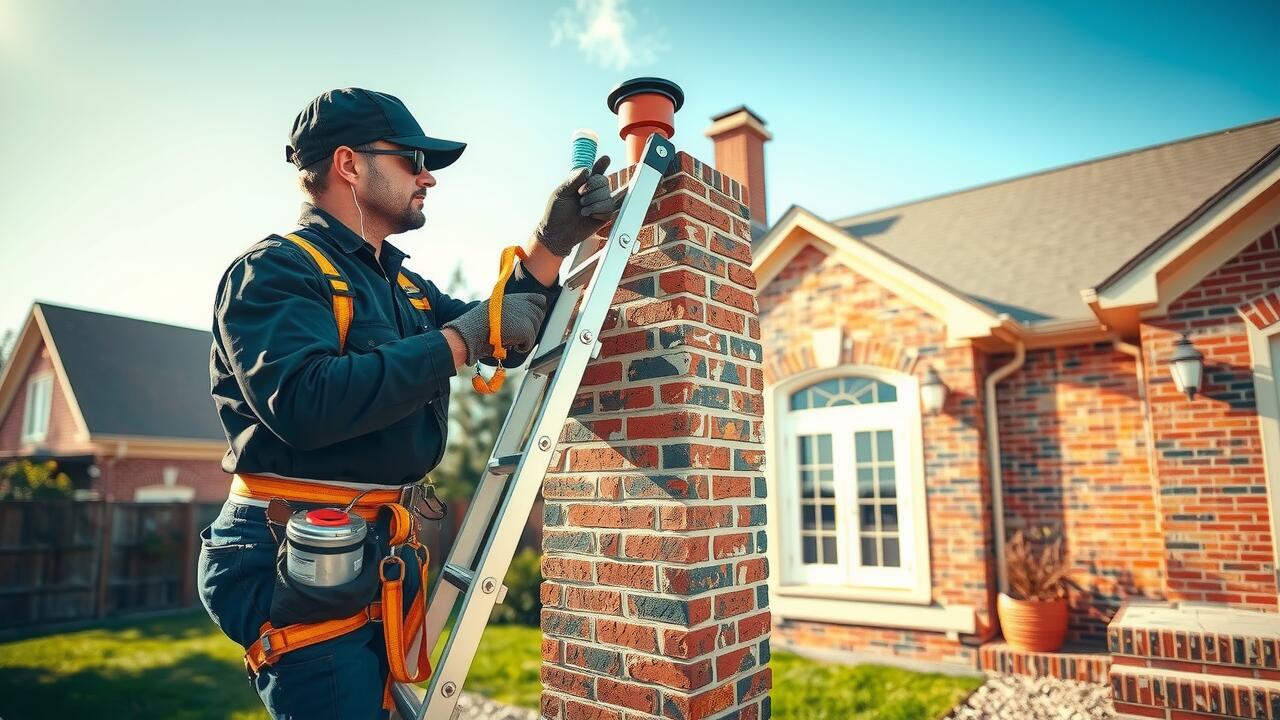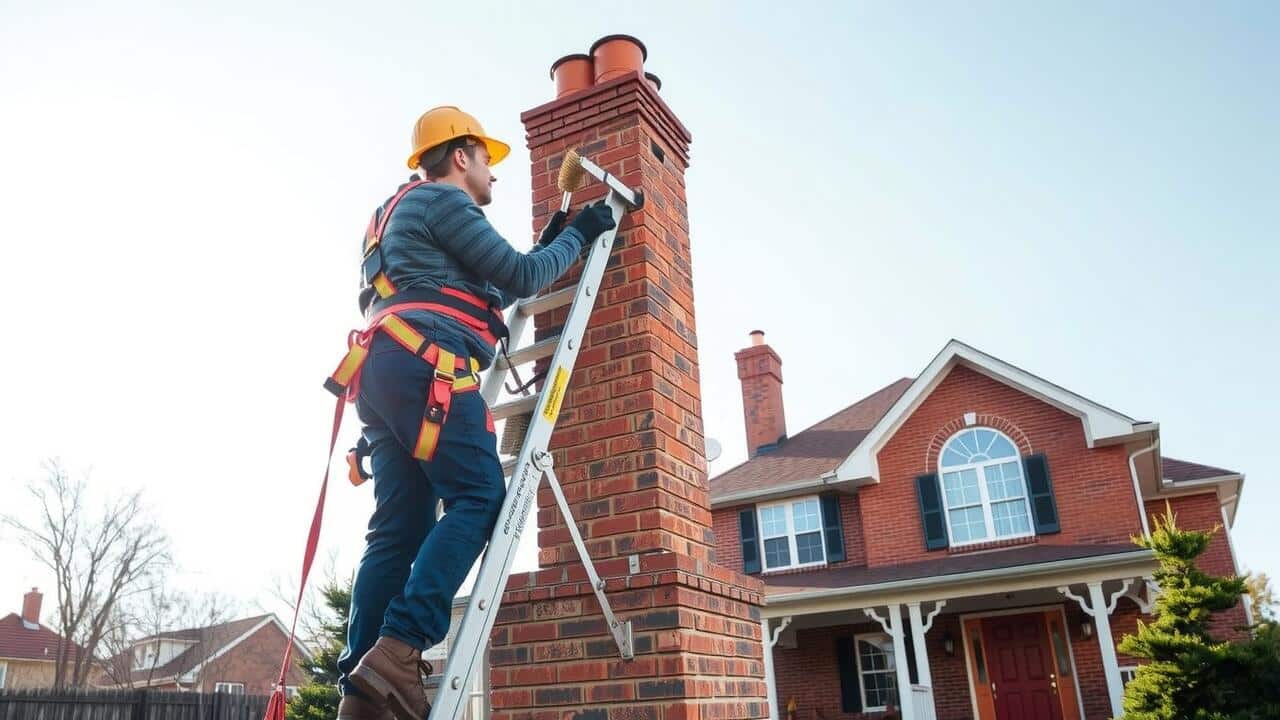Table Of Contents
Chimney Cap and Crown Design
The chimney cap and crown play pivotal roles in the overall integrity and functionality of the chimney system. A well-designed cap prevents water from infiltrating the chimney structure, which can lead to damage over time. The crown, typically made of concrete or masonry, serves as the protective barrier that sheds water away from the flue and surrounding materials. Proper construction of these components is essential to ensure that they effectively direct moisture away, reducing the likelihood of costly chimney repair.
In addition to their protective functions, the design of the cap and crown influences how efficiently smoke and gases escape from the chimney. A cap with adequate height and width allows for better airflow, which can improve the performance of your fireplace or stove. Regular inspections of the cap and crown are necessary to identify signs of wear or damage. If issues arise, timely chimney repair can help maintain a safe and efficient system, ensuring the longevity of your chimney while preventing further complications.
Functions and Benefits of Top Components
A chimney cap is a crucial component that helps protect the chimney from water damage, debris, and animal intrusion. By providing a barrier against rain and snow, it prevents moisture from seeping into the flue and causing deterioration. Additionally, a chimney cap ensures that harmful gases produced during combustion are directed safely away from the home. When chimney repair becomes necessary, a well-designed cap often reduces the frequency of such repairs by minimizing wear and tear on the chimney structure.
The crown of the chimney serves as a protective layer for the top of the structure. Made typically of concrete or masonry, it directs water away from the flue and prevents pooling that can lead to cracks and deterioration. Properly constructed crowns extend the life of the chimney and reduce maintenance needs. During routine assessments, homeowners can identify any signs of damage to the crown, allowing for prompt repairs that avoid more extensive chimney repair work in the future.
Maintenance Practices for Longevity
Regular maintenance is crucial for ensuring the longevity of any chimney structure. Homeowners should adopt a schedule for inspections, ideally once a year, to assess for signs of wear or damage. This not only helps identify potential issues early but also assists in scheduling necessary chimney repair. Keeping exhaust pathways clear is essential as blockages can lead to inefficient venting and increase the risk of chimney fires.
Additionally, routine cleaning is an important aspect of chimney maintenance. Creosote buildup can become a significant hazard, and addressing this through professional cleaning prevents dangerous situations. Homeowners must also remain vigilant for any cracks or deterioration in the chimney that could compromise its integrity. Addressing these problems promptly can save time and money while ensuring safety.
Routine Inspections and Cleaning
Routine inspections and cleaning of chimneys are essential for ensuring safe and efficient operation. Regular assessments help identify blockages caused by soot, creosote, or debris. This preventive measure can significantly reduce the risk of chimney fires and carbon monoxide buildup, promoting a healthier environment in homes. Scheduling inspections at least once a year is recommended, particularly before the heating season begins.
Cleaning practices, such as sweeping the flue to remove buildup, are crucial in maintaining chimney health. Homeowners should also be vigilant for signs of wear or damage to masonry and components like the cap and crown. Timely chimney repair can prevent minor issues from escalating into costly problems. Addressing these repairs promptly enhances safety and prolongs the life of the chimney system.
Common Problems and Solutions
Chimneys can encounter a variety of issues over time, leading to potential hazards and reduced efficiency. One common problem is creosote buildup, which can ignite and cause a chimney fire. Regular maintenance, including sweeping and inspections, helps identify this threat early on. Additionally, cracks in the chimney structure can allow moisture to seep in, causing further damage and compromising the integrity of the chimney. Addressing these cracks through proper sealing is essential to ensure safe operation.
When problems are detected, timely chimney repair is crucial to prevent more severe damage and costly repairs down the line. Signs such as water stains in the fireplace or an unusual smell can indicate underlying issues. It is important to consult a professional to properly assess the situation and recommend any necessary repairs. Maintaining a proactive approach toward chimney health can mitigate the risks of fires and extensive deterioration.
Identifying Issues Early
Regular inspections of chimneys are essential for spotting problems before they escalate. Common signs of wear or damage may include cracks in the flue, crumbling mortar joints, or signs of water damage on the exterior. By addressing these issues promptly, homeowners can prevent more extensive repairs later on. Identifying issues early not only safeguards the structure but also ensures that the chimney operates efficiently, reducing the risk of hazardous situations.
When issues are detected, timely chimney repair becomes crucial. Homeowners should consult professionals who specialize in chimney maintenance to properly assess the situation. Whether it is a minor repair or a more significant renovation, prompt action enhances the longevity and safety of the chimney. Ignoring problems can lead to costly repairs and safety hazards, making early detection and repair practices essential for all chimney owners.
FAQS
What is the 3:2-10 rule for chimneys?
The 3:2-10 rule is a guideline for chimney construction and maintenance that specifies the proper height and clearance of a chimney in relation to the roofline and nearby structures to ensure proper draft and safety.
How does the 3:2-10 rule affect chimney cap and crown design?
This rule emphasizes that a chimney should extend at least three feet above the highest point of the roof and be two feet higher than any structure within a ten-foot radius. This design helps prevent downdrafts and enhances the efficiency of the chimney.
Why are routine inspections important according to the 3:2-10 rule?
Routine inspections are crucial as they help identify any potential issues with the chimney’s structure and functionality, ensuring that it complies with the 3:2-10 rule and remains safe for use.
What common problems can arise if the 3:2-10 rule is not followed?
Failing to adhere to the 3:2-10 rule can lead to poor chimney draft, increased risk of chimney fires, and potential structural damage due to moisture and debris accumulation.
How can homeowners maintain their chimney in line with the 3:2-10 rule?
Homeowners can maintain their chimney by scheduling regular inspections, ensuring proper height and clearance, cleaning out creosote buildup, and addressing any structural issues as soon as they arise.


